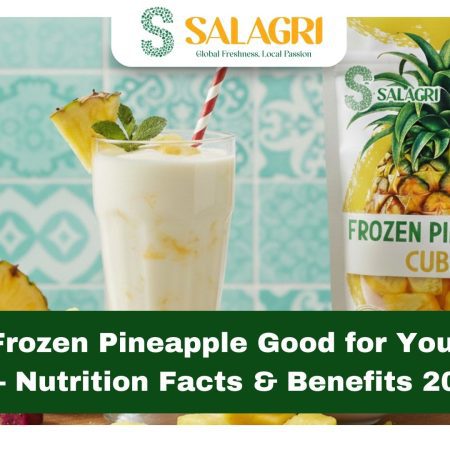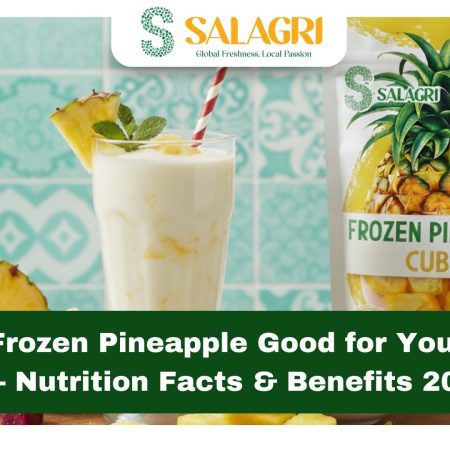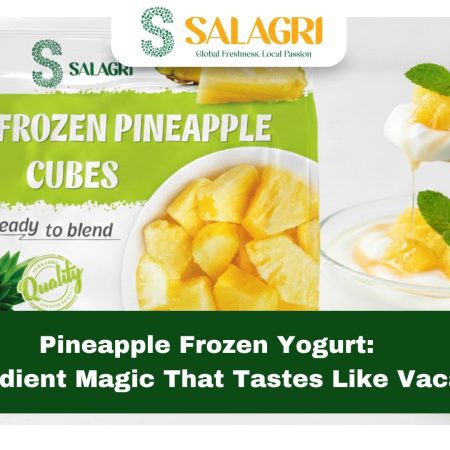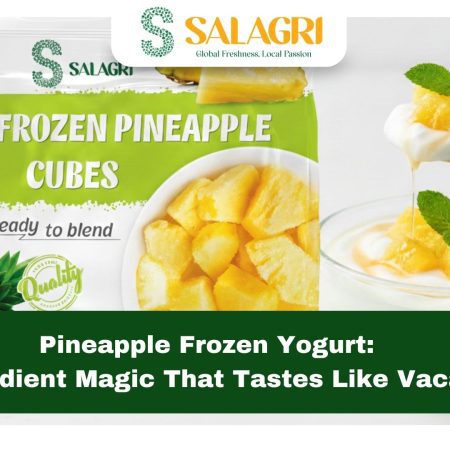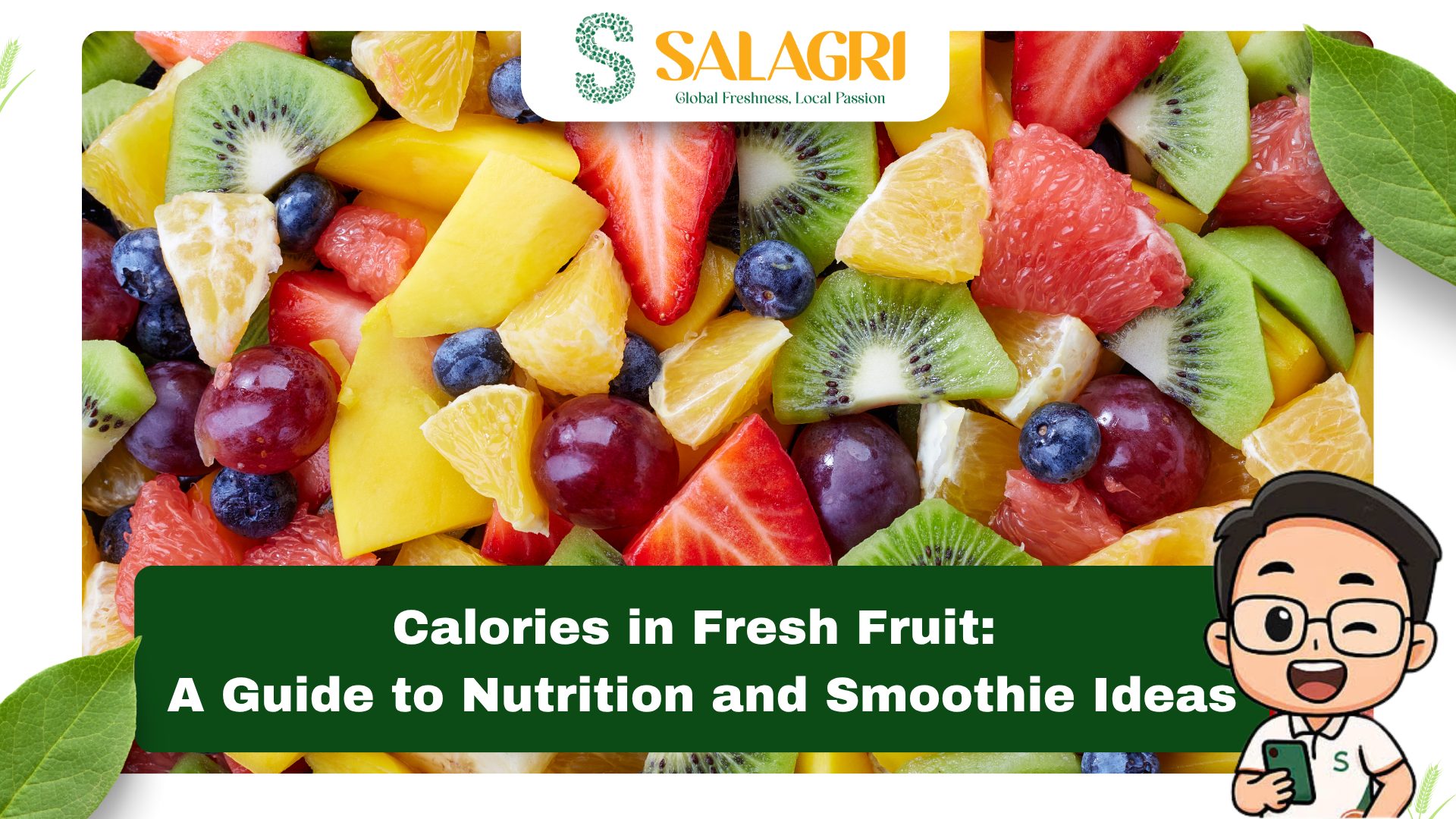
When it comes to healthy eating, fresh fruit is a go-to choice for its vibrant flavors and nutrient-packed profile. If you’re curious about the calories in fruit or specifically calories in fresh fruit, you’re not alone—many of us want to know how these natural treats fit into our diets. Fruits are low in calories, high in fiber, and loaded with vitamins, making them perfect for snacking, cooking, or blending into smoothies. In this guide, we’ll break down the calorie content of popular fresh and frozen fruits, explore their health benefits, and share why frozen options from SALAGRI Fruit are a fantastic choice for convenience and flavor. Plus, we’ll include tropical smoothie recipes using SALAGRI’s offerings to inspire your next meal. Whether you’re counting calories or just love fruit, this article has you covered.
Why Calories in Fresh Fruit Matter
Fruits are primarily carbohydrates, with most calories coming from natural sugars like fructose, though some, like avocados, also contribute healthy fats. Unlike processed snacks, fruits offer fiber, vitamins, and antioxidants, which support digestion, heart health, and immunity. Knowing the calorie content helps you balance your diet, especially if you’re managing weight, diabetes, or energy needs.
For example, a 2025 study from the Journal of Nutrition highlights that fruits’ low calorie density and high water content make them filling, reducing overall calorie intake when swapped for high-calorie snacks. This makes fresh and frozen fruits ideal for health-conscious eaters. Below, we’ll detail calorie counts for common fruits and compare them to frozen alternatives, focusing on tropical varieties from SALAGRI.

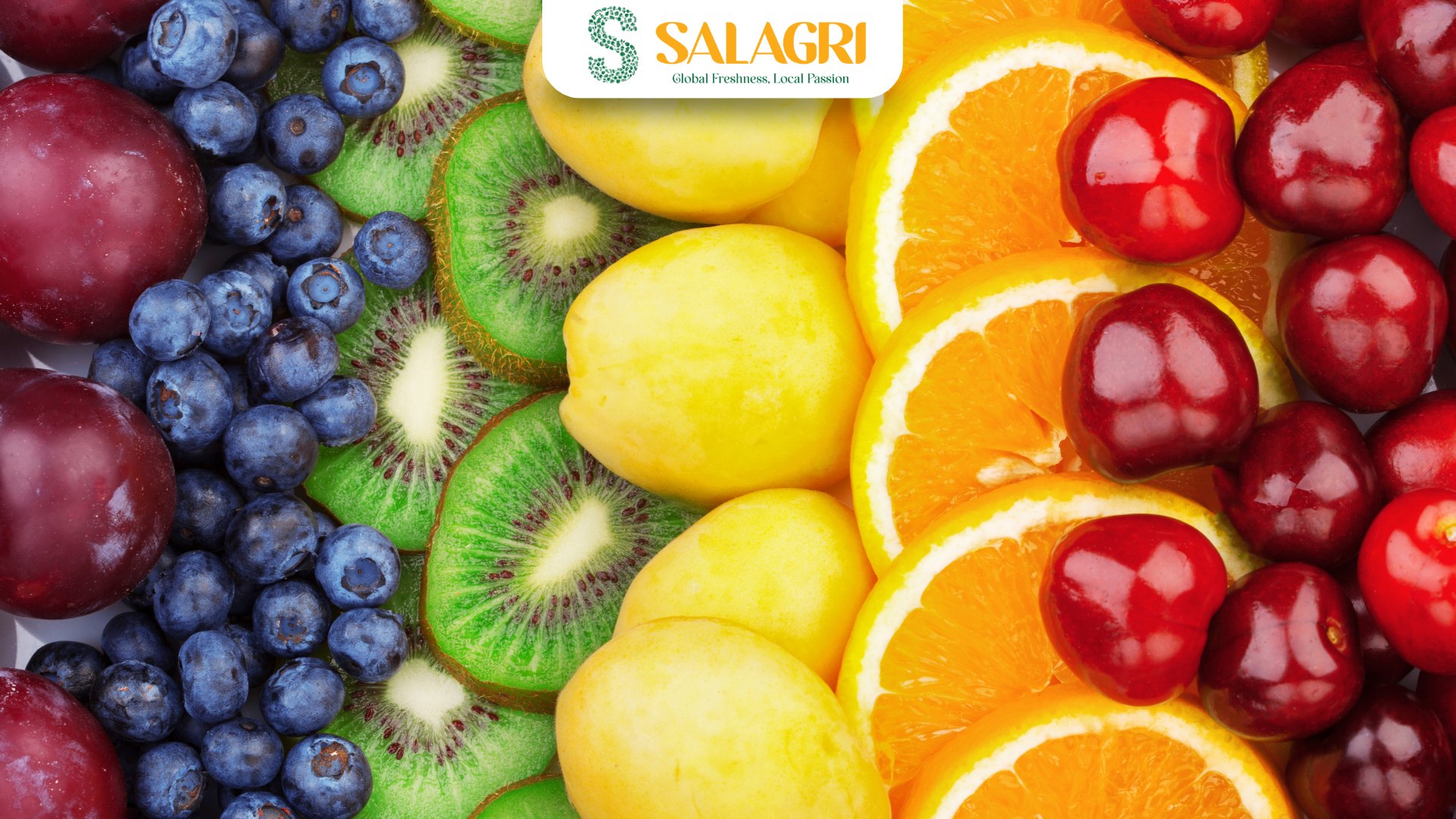
Calories in Fresh Fruit: A Breakdown
Here’s a look at the approximate calorie content of popular fresh fruits per serving, based on USDA data and adjusted for 2025 nutritional insights:
- Apple (medium, 150g): 96 calories
- Banana (medium, 120g): 111 calories
- Mango (1 piece, 350g): 215 calories
- Pineapple (1 small slice, 55g): 32 calories
- Avocado (Hass, 220g): 354 calories
- Dragon Fruit (1 piece, 198g): 119 calories
- Passion Fruit (1 piece, 90g): 59 calories
- Watermelon (1 portion, 150g): 57 calories
- Strawberries (1 cup, 144g): 46 calories
- Blueberries (1 cup, 148g): 84 calories
- Orange (medium, 160g): 75 calories
- Grapefruit (1 piece, 196g): 92 calories
- Kiwi (1 piece, 75g): 46 calories
- Cherries (10 pieces, 80g): 50 calories
- Pomegranate (1 piece, 282g): 222 calories
These values vary slightly based on size and ripeness, but they give a solid baseline. Tropical fruits like mango and dragon fruit, while slightly higher in calories, offer unique nutrients like vitamin C and antioxidants, making them worth including in moderation.
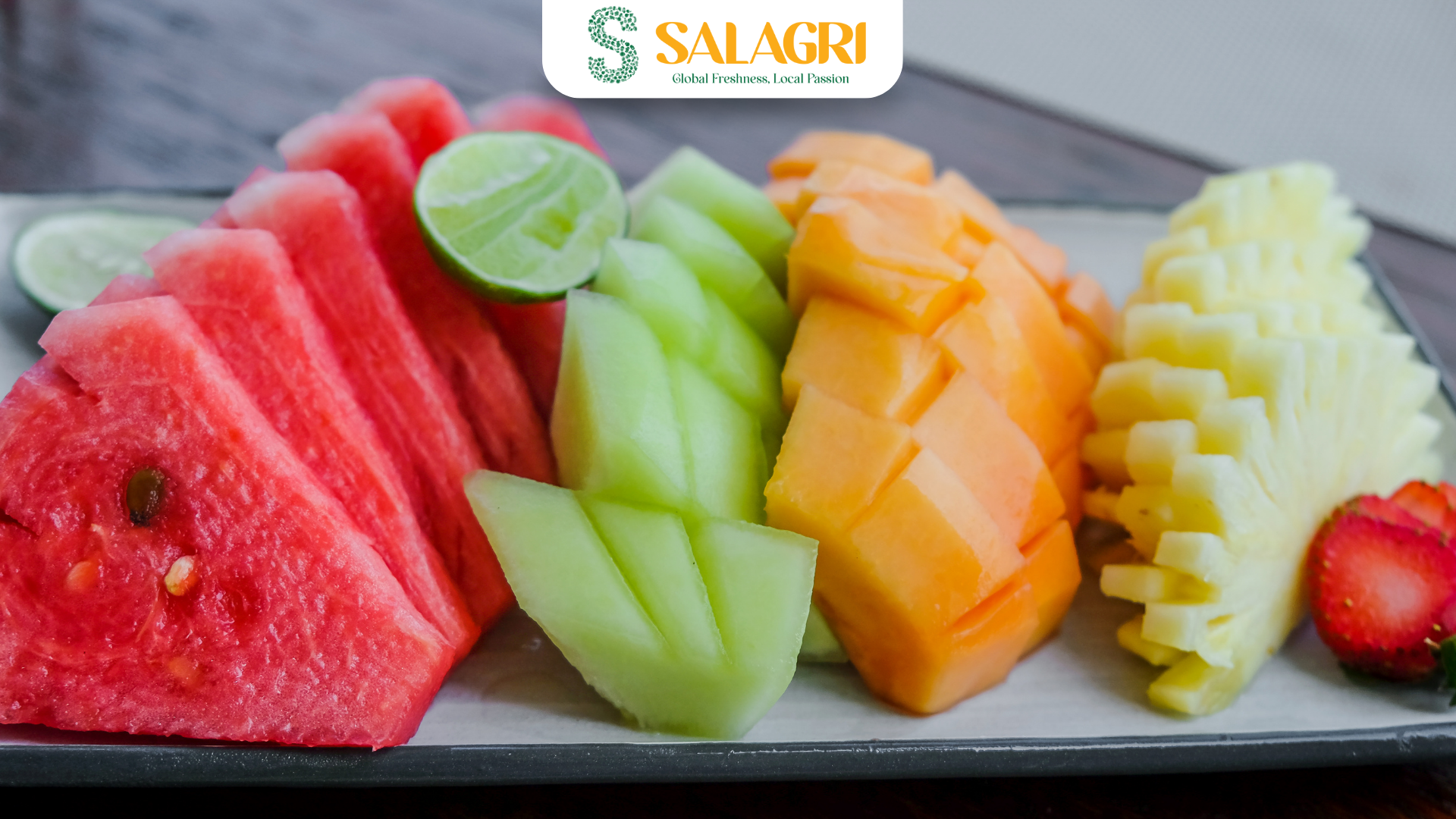
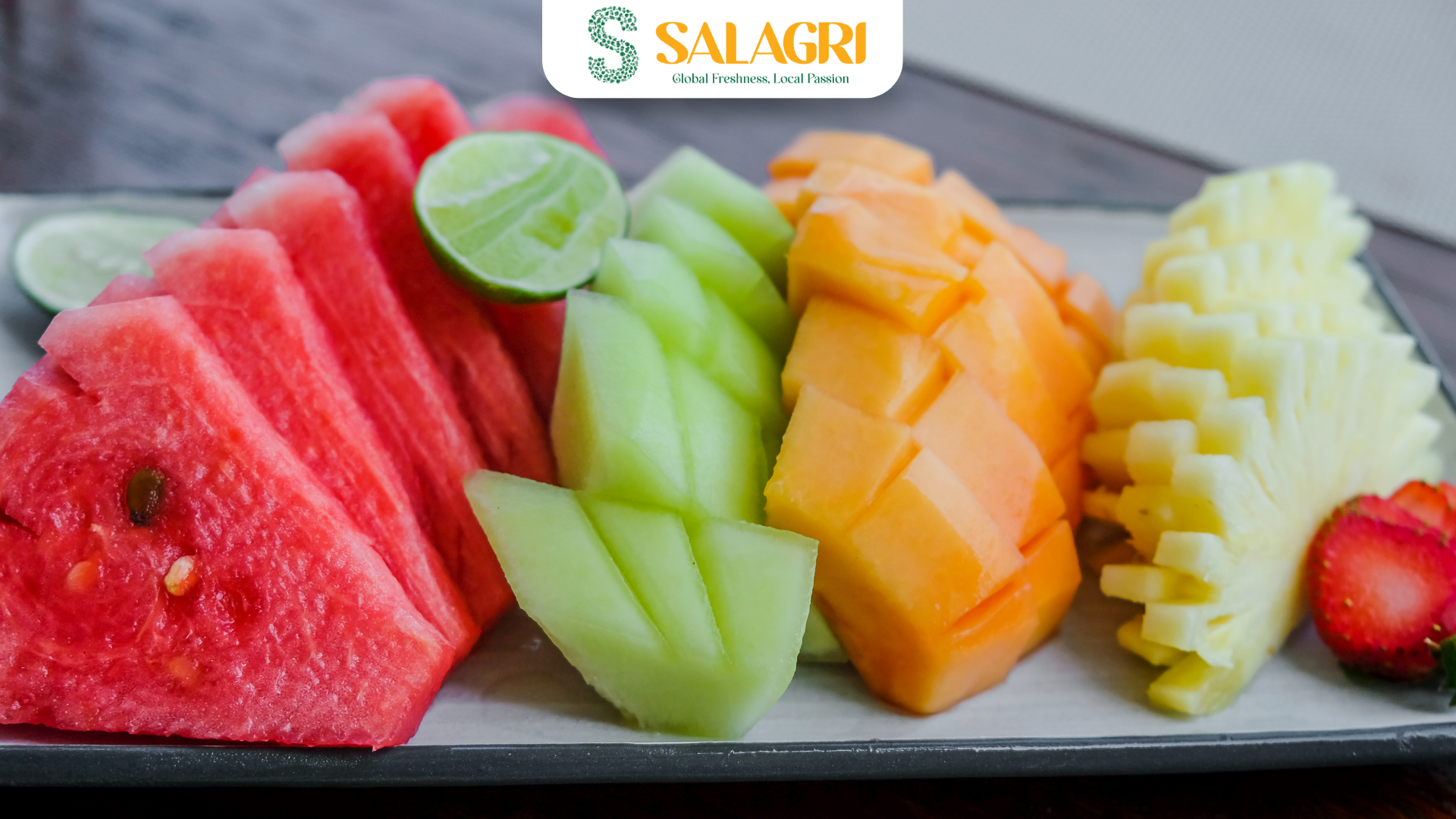
Benefits of Frozen Fruit: A Smart Alternative
While fresh fruit is fantastic, frozen fruit offers distinct advantages that make it a staple for many households:
- Nutrient Retention: Frozen fruits are harvested at peak ripeness and flash-frozen, locking in vitamins and minerals. A 2025 American Frozen Food Institute report notes that frozen fruits can retain up to 95% of their nutrients, sometimes surpassing fresh fruits that lose vitamins during transport.
- Longevity: Stored at -18°C, frozen fruits like those from SALAGRI last up to 24 months, reducing waste and ensuring you always have fruit on hand.
- Convenience: Pre-washed, pre-cut, and ready to use, frozen fruits save time—perfect for smoothies, baking, or quick snacks.
- Year-Round Availability: Enjoy tropical fruits like watermelon or passion fruit anytime, even out of season.
- Calorie Control: Portioning is easy, helping you stick to dietary goals without overeating.
For health-conscious folks, frozen fruits are naturally sweet, eliminating the need for added sugars. They’re also budget-friendly, especially for exotic varieties that are pricey when fresh.
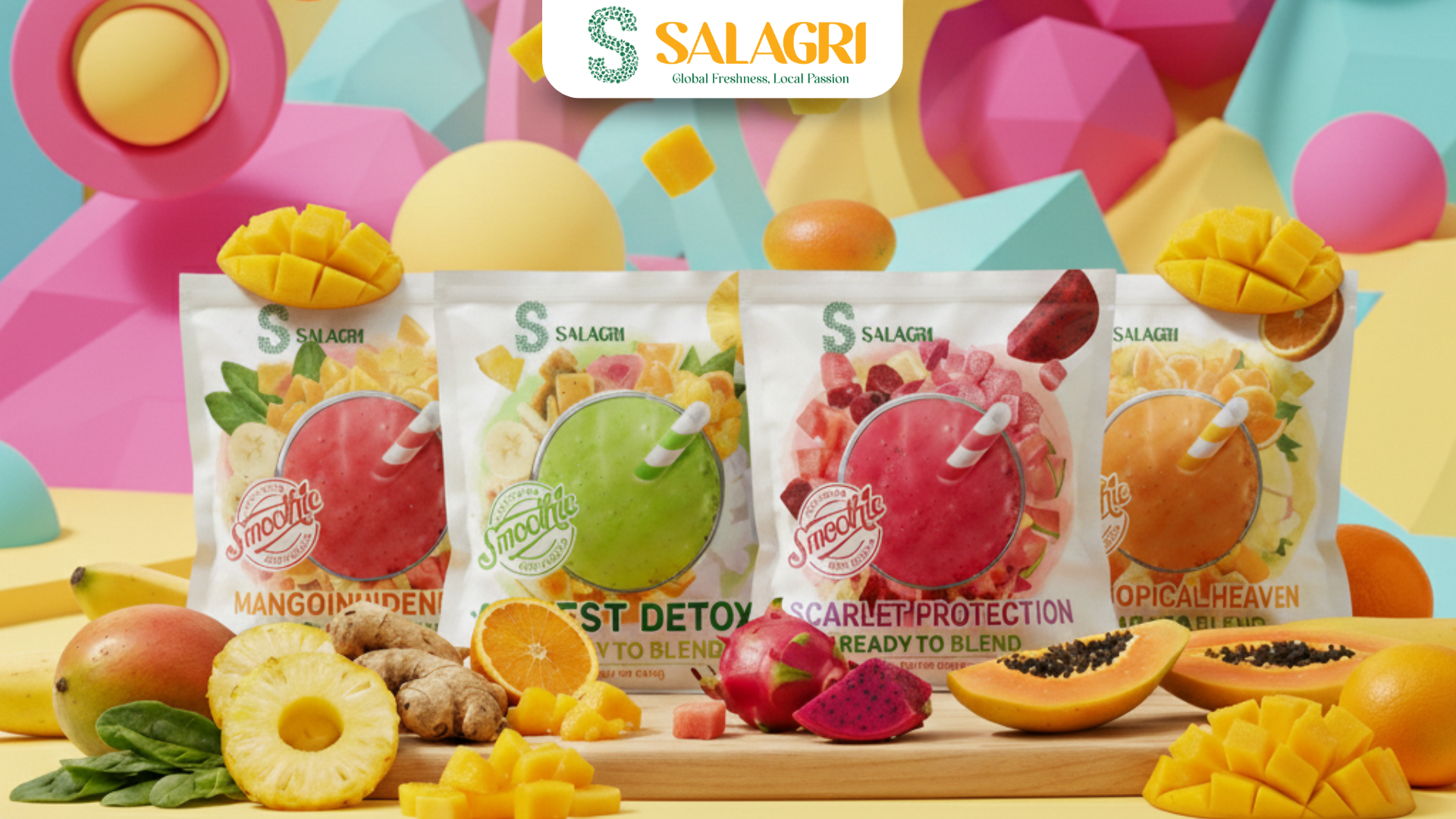
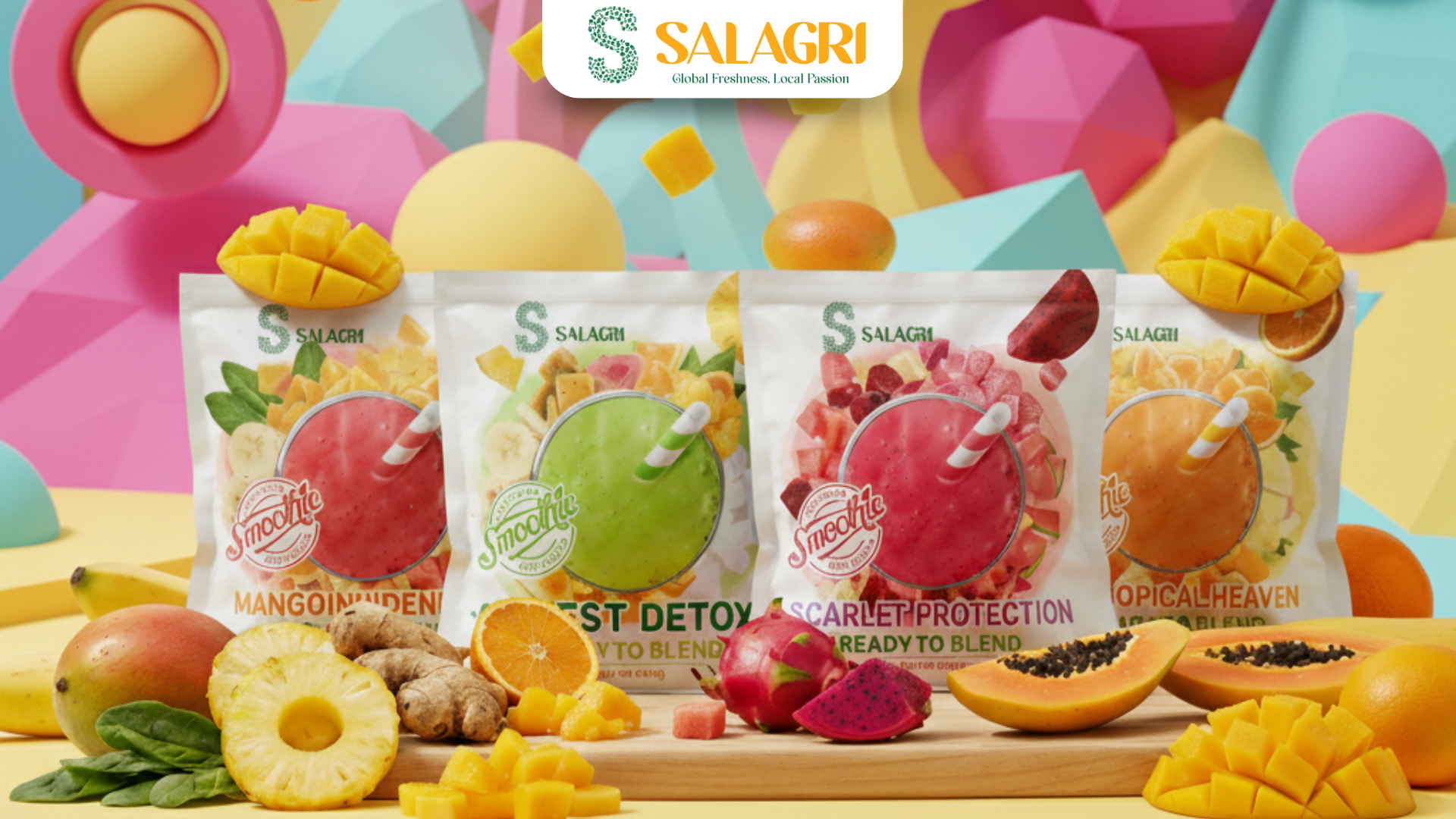
Why Buy Frozen Fruit Online, Especially from Vietnam?
Ordering frozen fruit online is a lifesaver for busy schedules. You get doorstep delivery, access to detailed sourcing info, and often better prices than local stores. Online platforms let you explore certifications, read reviews, and set up subscriptions for regular supplies, ensuring you never run out.
Vietnam shines as a source for frozen fruit, thanks to its tropical climate and fertile regions. Fruits like mangoes from Dong Thap, pineapples from Tien Giang, and dragon fruit from Binh Thuan are world-class for their flavor and quality. Vietnam’s agricultural expertise, combined with modern freezing techniques, ensures top-tier produce.
SALAGRI Fruit, a leading IQF fruit supplier in Vietnam, delivers premium frozen fruits and vegetables straight from Vietnam’s orchards. Their IQF technology freezes fruits individually, preserving texture and taste. With certifications like HALAL, BRC, and FDA, and a commitment to sustainable farming, SALAGRI makes online ordering a breeze, with global shipping that keeps your fruit fresh.
SALAGRI Fruit: Your Source for Tropical Frozen Goodness
SALAGRI Fruit is the world’s leading provider of frozen fruits and vegetables, based in Vietnam’s agricultural heartland. Their lineup includes tropical favorites like mango, pineapple, avocado, banana, dragon fruit, passion fruit, and watermelon—all frozen at peak ripeness with no additives. Their eco-friendly practices, such as partnering with local farmers and using sustainable packaging, align with health and environmental goals. Whether you’re blending smoothies or snacking, SALAGRI’s products elevate every bite.
Tropical Smoothie Recipes with SALAGRI’s Frozen Fruits
Frozen fruit is perfect for smoothies, offering a creamy texture and intense flavor. Here are three low-calorie recipes using SALAGRI’s tropical fruits:
1. Mango Banana Bliss Smoothie
- Ingredients: 1 cup SALAGRI frozen mango chunks (215 cal), 1 frozen banana (111 cal), 1 cup almond milk (30 cal), 1 tbsp flaxseeds (55 cal).
- Instructions: Blend until smooth. Add more milk for a thinner consistency. Serves 2 (approx. 200 cal/serving).
- Why It Works: Mango’s vitamin C and banana’s potassium make this a nutrient-dense, energizing drink.
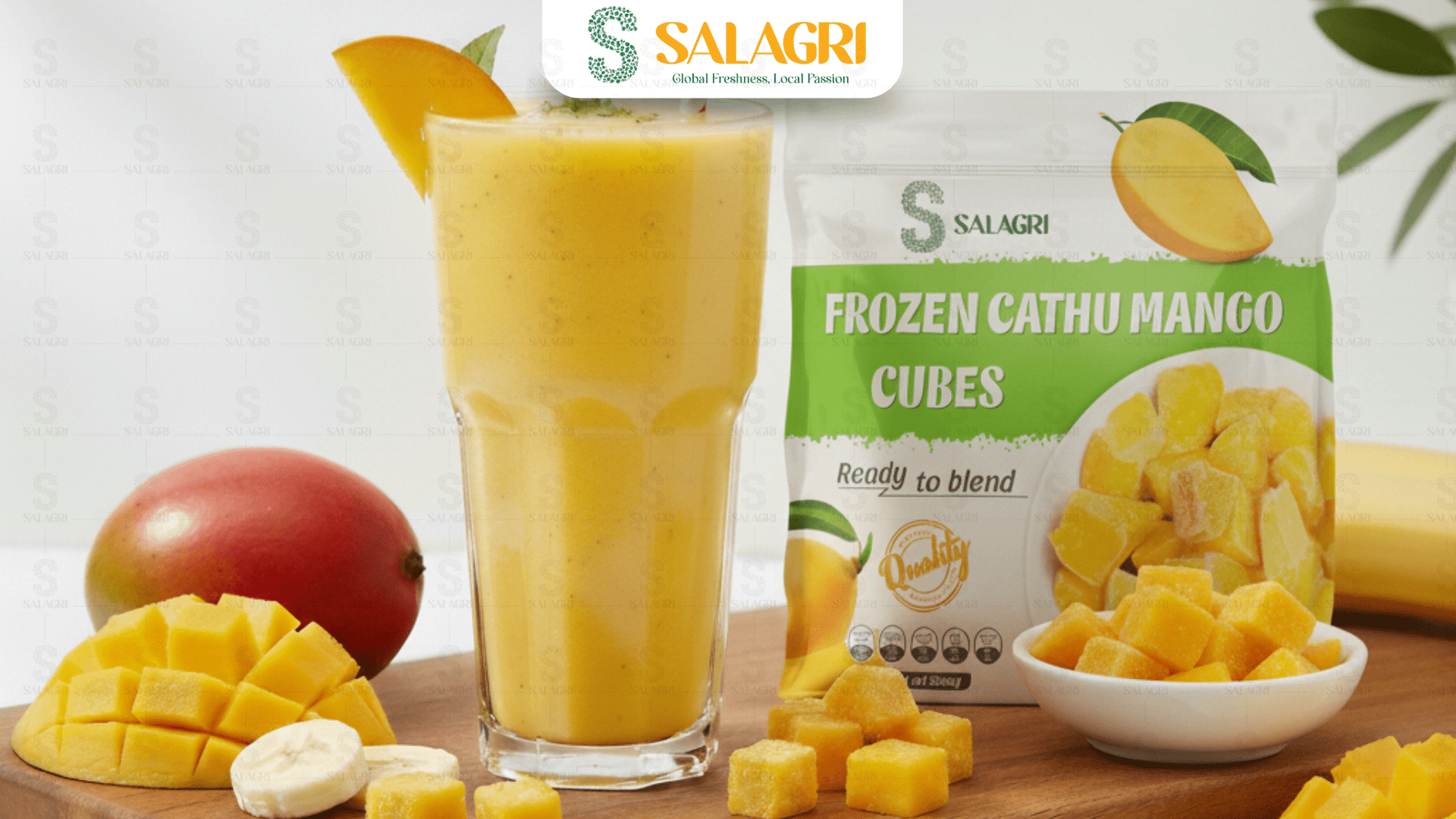
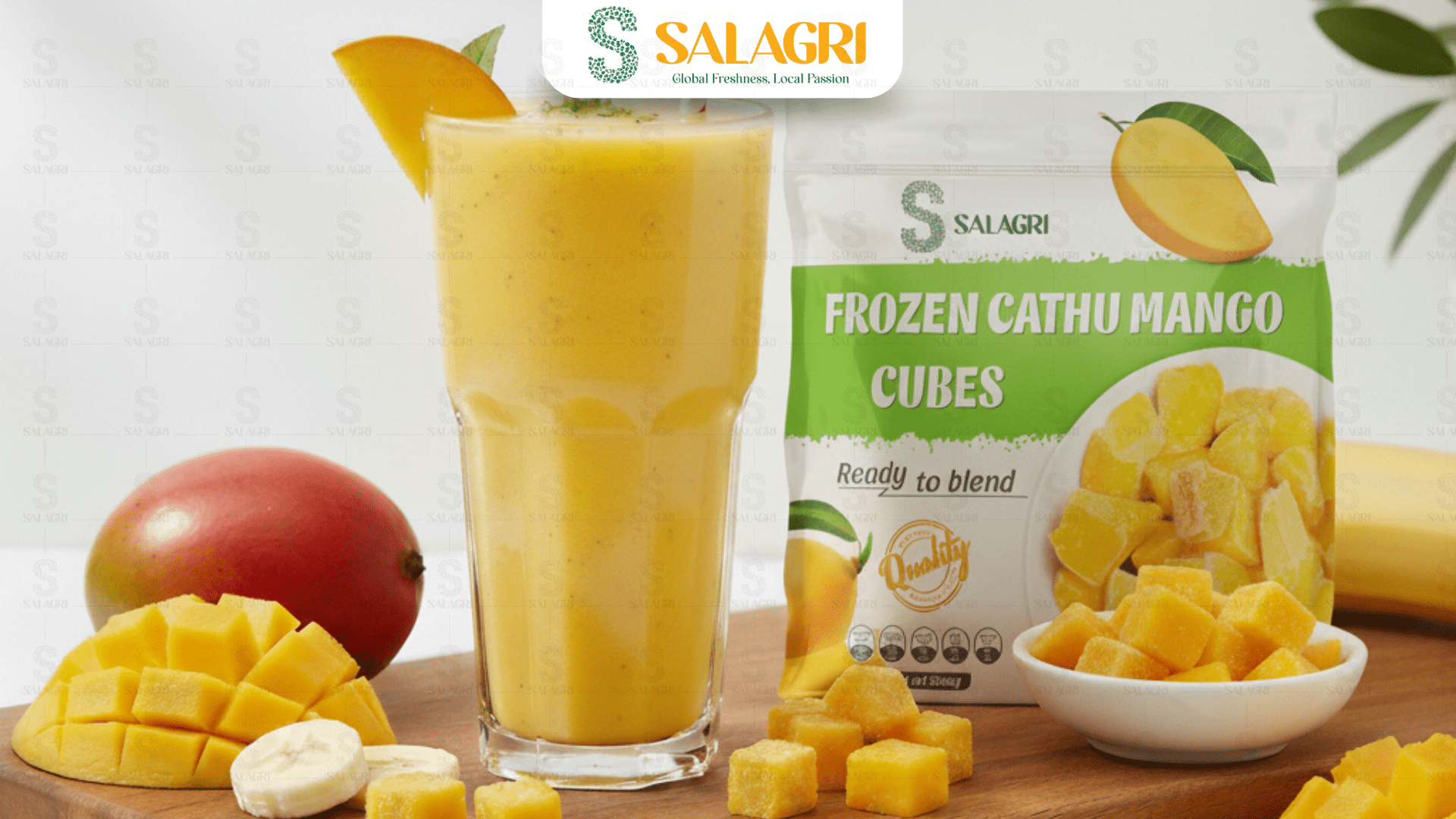
2. Pineapple Dragon Fruit Delight
- Ingredients: 1 cup SALAGRI frozen dragon fruit (119 cal), ½ cup SALAGRI frozen pineapple chunks (80 cal), ¾ cup coconut water (45 cal), handful of spinach (7 cal).
- Instructions: Blend on high; serve chilled. Serves 1 (approx. 250 cal).
- Why It Works: Dragon fruit’s antioxidants and pineapple’s digestive enzymes support post-workout recovery.
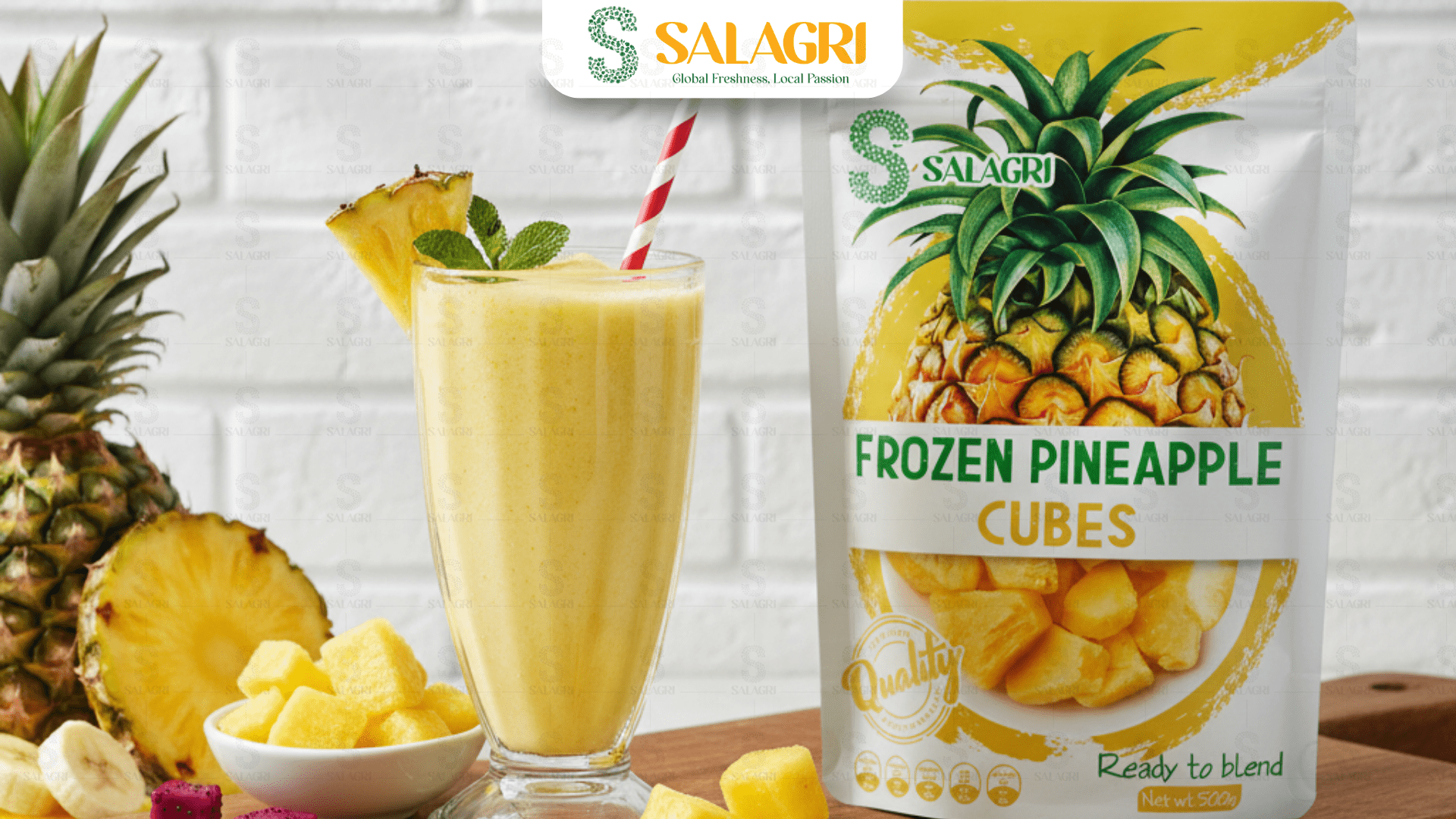
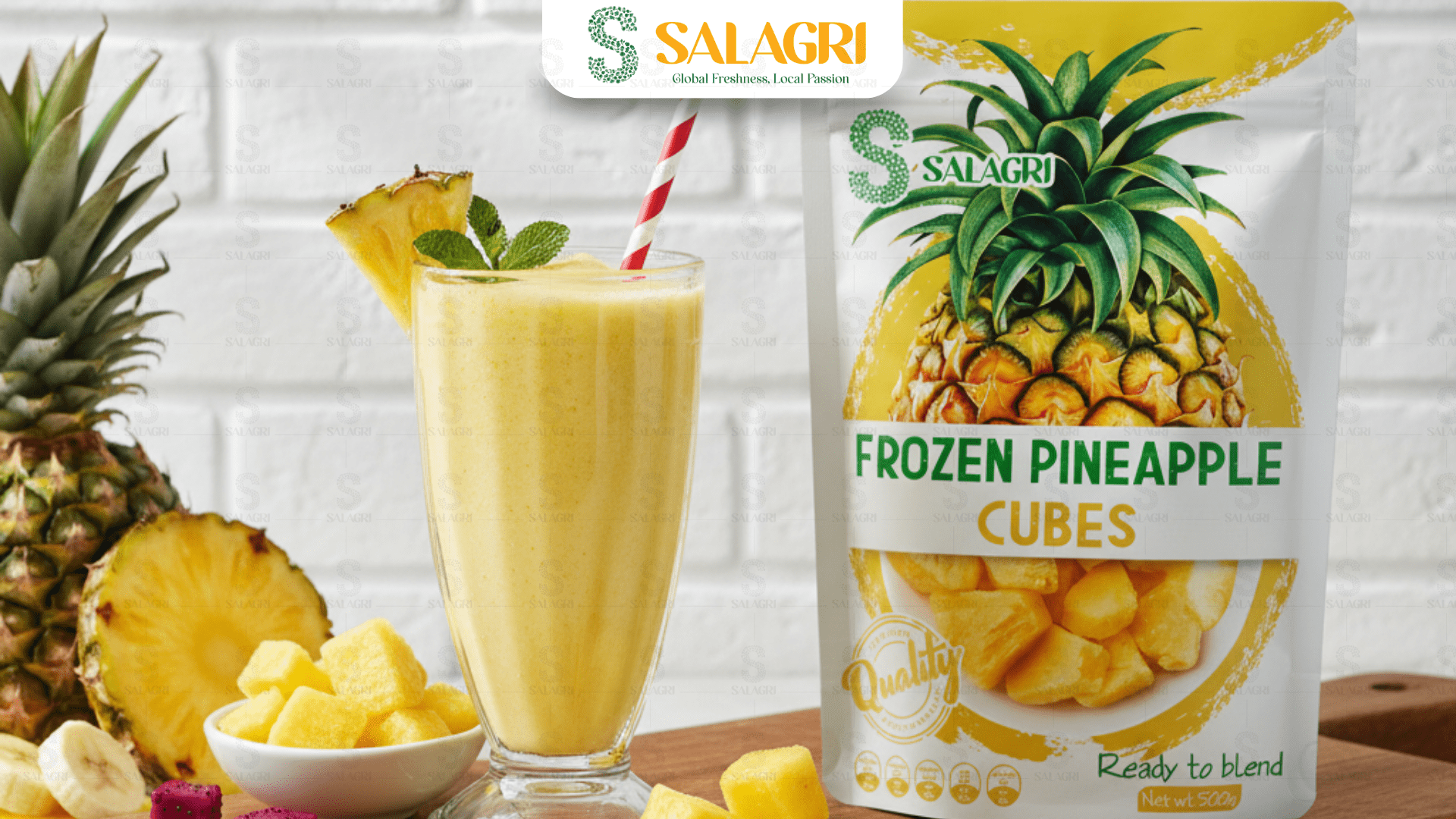
3. Passion Fruit Watermelon Refresher
- Ingredients: ½ cup SALAGRI frozen passion fruit (59 cal), 1 cup SALAGRI frozen watermelon (57 cal), ½ cup Greek yogurt (70 cal), 1 cup water (0 cal), mint for garnish.
- Instructions: Blend lightly for a slushy texture. Serves 2 (approx. 90 cal/serving).
- Why It Works: Low-calorie and hydrating, this is perfect for a refreshing snack.
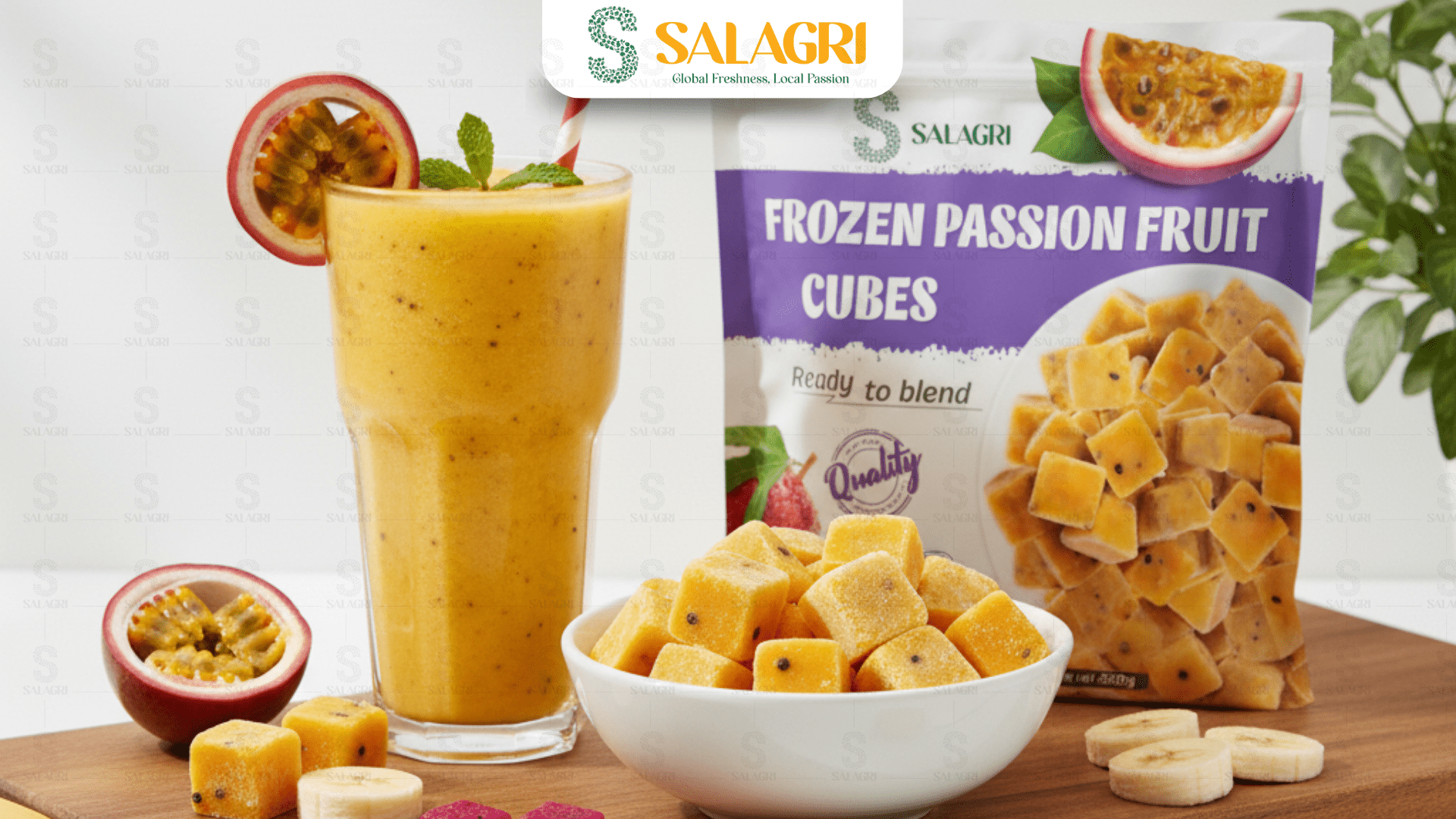
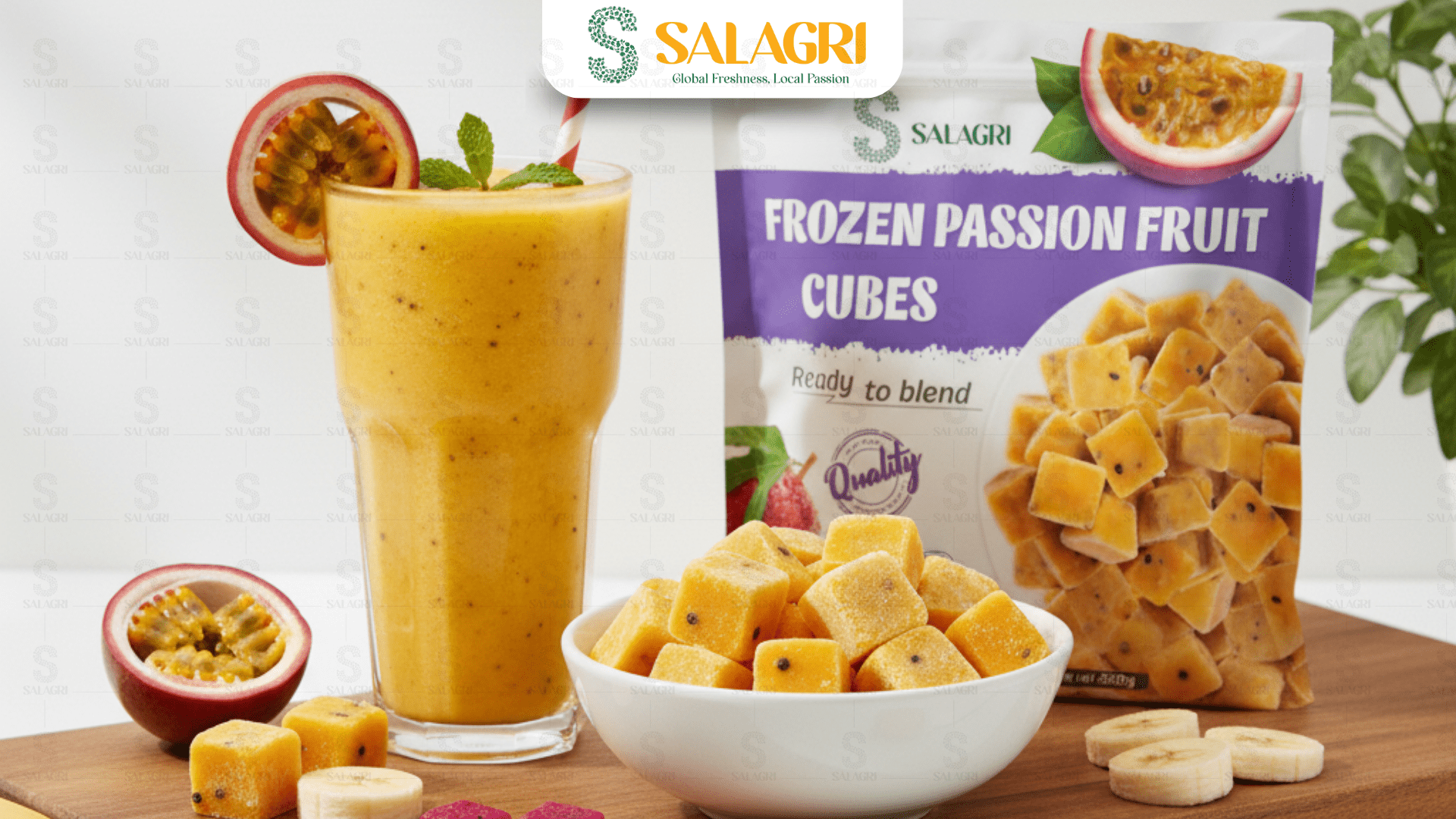
frozen-passion-fruit-smoothie
These recipes keep calories low while maximizing flavor, using SALAGRI’s high-quality frozen fruits.
How to Incorporate Low-Calorie Fruits into Your Diet
- Snacking Smart: Pair low-calorie fruits like strawberries (46 cal/cup) with nuts for a balanced snack.
- Smoothie Boosts: Use frozen fruits to control portions and add nutrients without extra calories.
- Meal Prep: Add fruits like kiwi or grapefruit to salads for a low-calorie flavor kick.
- Mind Portions: Dried fruits (e.g., raisins, 62 cal/20g) are calorie-dense, so stick to small servings.
Comparison: Fresh vs. Frozen Fruit Calories
|
Fruit |
Fresh (per 100g) | Frozen (per 100g) |
|
Mango |
60 cal | 60 cal |
|
Pineapple |
50 cal |
50 cal |
|
Avocado |
160 cal |
160 cal |
|
Banana |
89 cal |
89 cal |
|
Dragon Fruit |
60 cal |
60 cal |
| Passion Fruit | 97 cal |
97 cal |
| Watermelon | 30 cal |
30 cal |
Calorie content remains nearly identical, as freezing doesn’t alter the fruit’s core composition. However, frozen fruit’s pre-portioned nature makes calorie tracking easier.
Practical Tips for Managing Calories with Fruit
- Read Labels: For canned or frozen fruits, choose “no added sugar” options to keep calories low.
- Portion Control: Stick to 1-2 cups daily, as recommended by the USDA, to balance calories and nutrients.
- Mix and Match: Combine high-calorie fruits (avocado) with low-calorie ones (watermelon) for variety.
- Smoothie Savvy: Use SALAGRI’s frozen fruits to create low-calorie, nutrient-rich blends without guesswork.
Conclusion: Enjoy Fruit, Fresh or Frozen, with Confidence
Understanding the calories in fresh fruit helps you make informed choices for a balanced diet. Whether you’re grabbing a fresh apple or blending a smoothie with SALAGRI’s frozen mango, fruit is a delicious way to stay healthy. With their tropical offerings, SALAGRI Fruit makes it easy to enjoy Vietnam’s finest produce anytime. Order online and discover the joy of low-calorie, high-flavor smoothies today!





